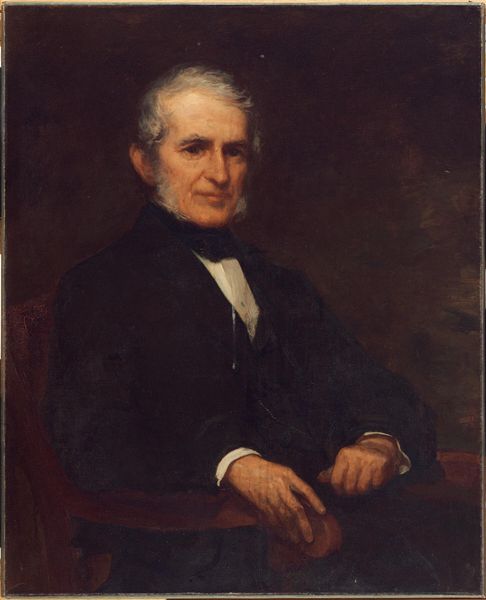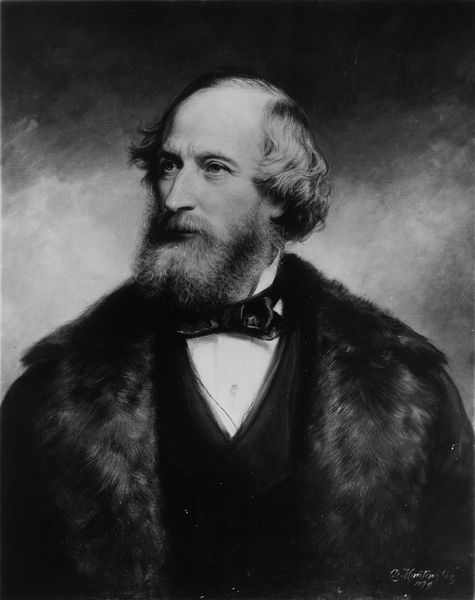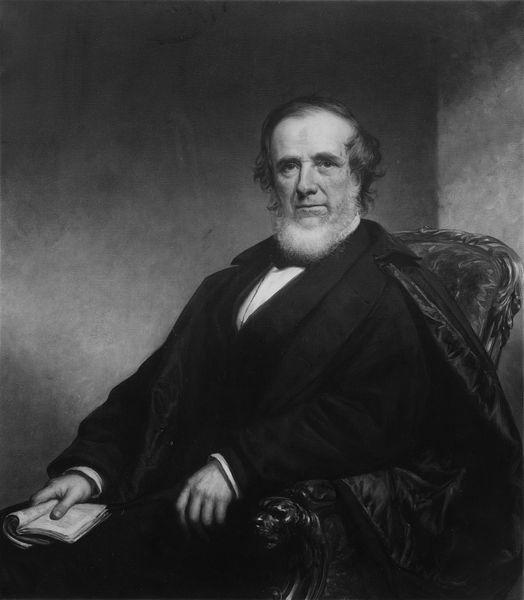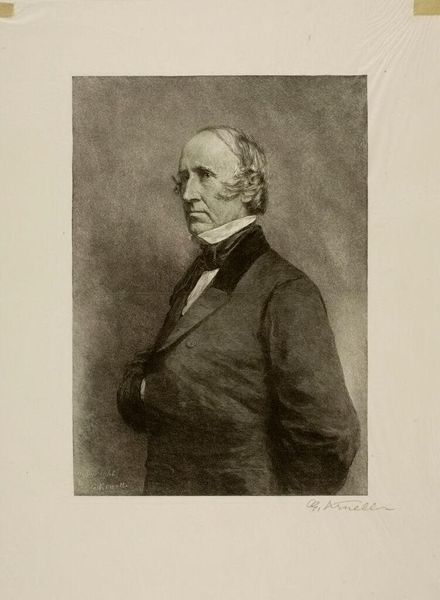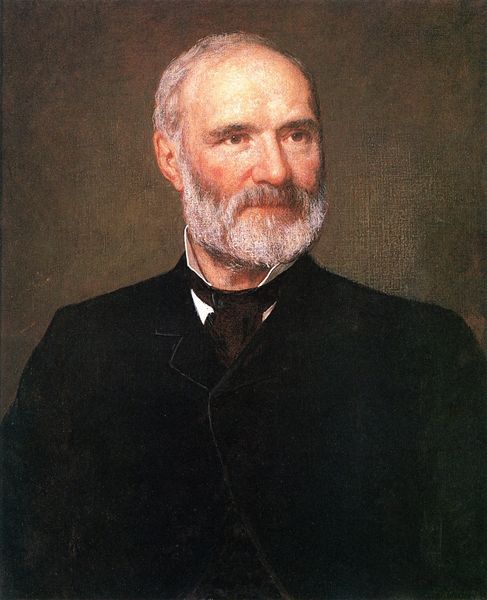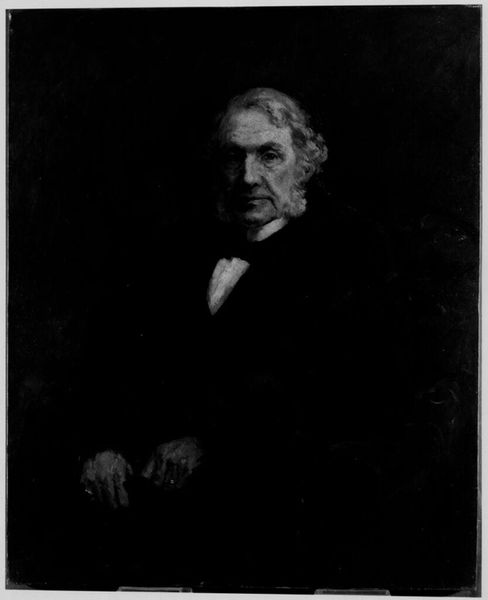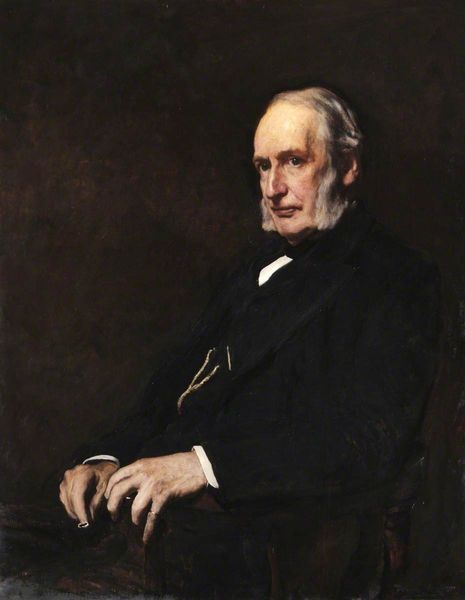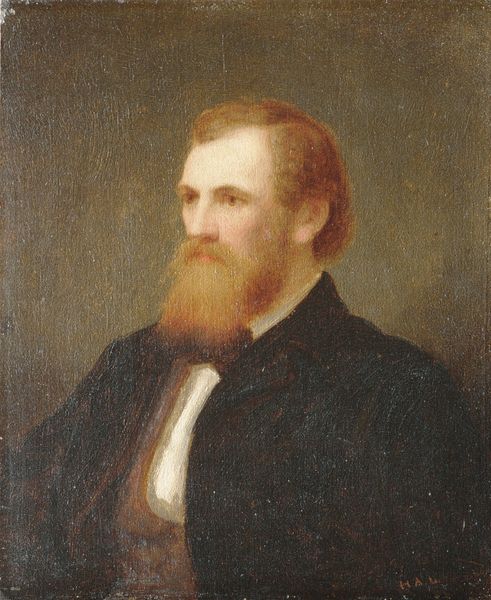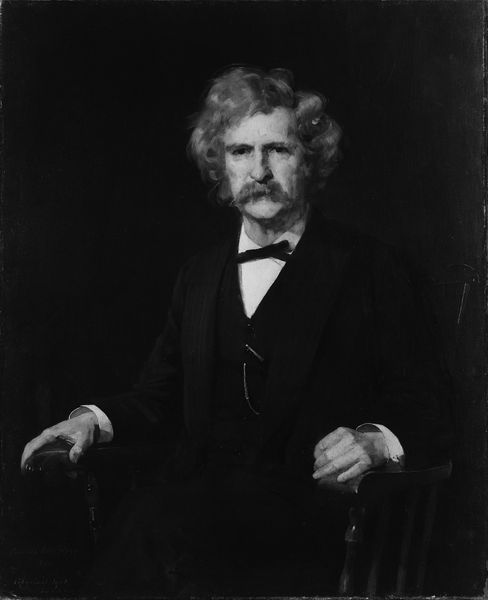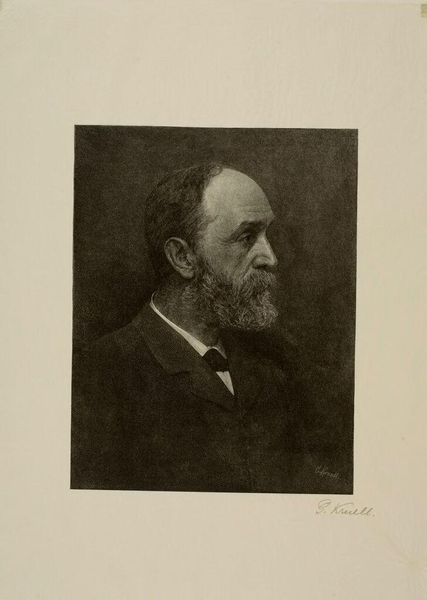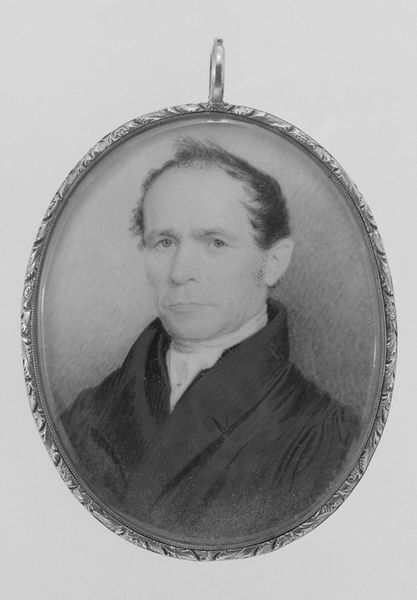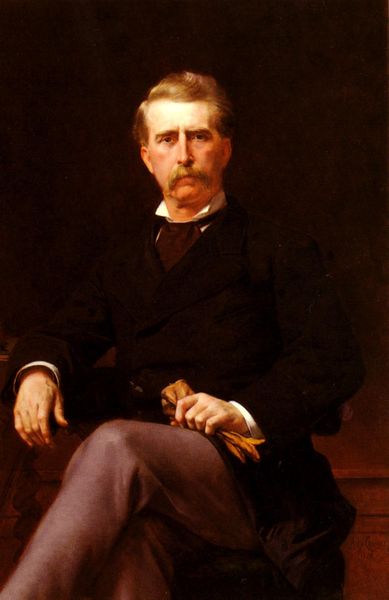
painting, oil-paint
#
portrait
#
black and white photography
#
portrait
#
painting
#
oil-paint
#
figuration
#
classicism
#
black and white
#
history-painting
#
academic-art
#
realism
Dimensions: 52 3/4 × 39 1/2 in.
Copyright: Public Domain
Curator: Let’s turn our attention to this remarkable oil painting, "Alexander N. Fullerton," created by James Forbes in 1865. It's currently part of the collection at The Art Institute of Chicago. Editor: Stark. The near-monochrome palette really dictates the initial impact. The formal arrangement also exudes authority through simple, confident shapes. Curator: Precisely, the darkness adds an incredible gravity, doesn’t it? Consider the iconography of that inkwell and book beside him. Those items symbolize intellect, scholarship, and perhaps record-keeping. What associations do those conjure up for you? Editor: Oh, absolutely. The accessories augment this aura of learned authority you’ve rightly indicated, as well as anchoring it, in some way, to the earth with notions of his intellectual productivity in contrast to an ephemeral depiction of an elevated man of station. And how do the textures function here? The slightly ragged brushstrokes forming the background serve to contrast with the intense refinement and control exhibited in Fullerton’s facial details. Curator: Good eye! That textural contrast guides the eye. It focuses the viewer's attention firmly on his face. He holds his eyeglasses too, conveying the idea that he is thoughtful, that he reflects on what he sees. Given the date, what societal values can be extrapolated by such carefully composed pieces in a somber post-civil war reality? Editor: One might say that he is depicted as a bastion of rationalism in a time of turmoil; a man unflappable by recent tragic upheavals. It’s almost aspirational—a model of the sort of learned individual required to lead society, to literally "make things clear" so the country can properly and objectively re-establish itself post conflict. Curator: Forbes seems to have a gift for crafting portraits imbued with profound symbolism that reflect their subject's contributions but more tellingly, as you put so well, an idealism the nation sought to project through its accomplished citizens. Editor: Absolutely. It's a portrait of stoicism in visual form. I do think there is a cold and detached appeal within the piece. I'm left to ponder: who was Fullerton, really? It piques curiosity!
Comments
No comments
Be the first to comment and join the conversation on the ultimate creative platform.
